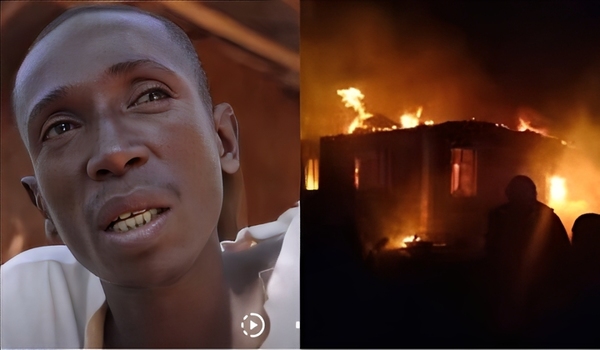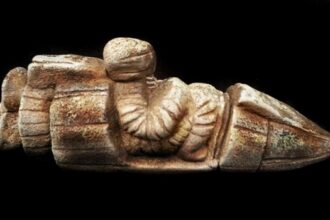Ismail Azizi, now 41 years old, lives in a quiet village in Tanzania, where his story inspires both fascination and dread. His life has been marked by a series of near-fatal incidents, after each of which he was declared dead—six times in total—only to miraculously come back to life. This phenomenon defies medical logic and challenges everything we think we know about life and death.
Despite surviving these seemingly impossible events, Ismail now lives a life shadowed by fear and rejection. Accusations of witchcraft and involvement with supernatural forces have driven away his family and neighbors, condemning him to solitude. To many, he is seen as cursed—or even immortal.
Deaths and Impossible Returns
Over the years, documented accounts tell of occasions when Azizi was officially declared dead — only to be found alive shortly after. These incidents range from severe medical emergencies to near-fatal accidents, leaving doctors perplexed and neighbors uneasy.
1. The Work Accident and the First “Death”
Ismail’s first near-death experience happened during his work. He suffered a severe accident, the exact details of which are not always clear, but it resulted in injuries so severe that rescuers and colleagues considered him lifeless. With no apparent vital signs, his body was taken to the local morgue, a standard procedure for victims of fatal accidents.
However, hours later, in the cold and silent environment of the morgue, Ismail regained consciousness. Confused and disoriented, he got up and simply walked out. The sight of a man, declared dead, walking out of the morgue caused panic among hospital staff and anyone who witnessed the event. It was the beginning of his reputation as someone who “could not die.”
2. Fulminant Malaria and the Interrupted Wake
Some time later, Ismail contracted an aggressive form of malaria. His condition rapidly worsened. High fever and complications from the disease left him unconscious and, once again, without perceptible vital signs. A doctor declared him dead.
His devastated family began funeral preparations. Ismail’s body was washed, dressed in a shroud, and placed inside the coffin. During the wake, while family and friends mourned his death, something unbelievable happened: Ismail woke up inside the coffin. The sound of his movements and moans frightened everyone. When they opened the coffin, they found him alive. The mourning turned into shock and fear, and the belief that something supernatural surrounded him began to take hold.
3. The Car Accident and the Deep Coma
The third “death” resulted from a violent car accident. The impact was so strong that Ismail was thrown from the vehicle, suffering multiple traumas and falling into a deep coma. At the hospital, doctors assessed his condition as irreversible. With no detectable brain activity and fatal injuries, he was declared dead again.
His body was taken to the morgue, but this time his family, perhaps already skeptical, requested some time before proceeding with the funeral. Days passed with Ismail in a coma, until, to the medical team’s surprise, he began showing signs of recovery and eventually woke up.
4. The Snake Bite and Three Days in the Morgue
The fourth experience was perhaps one of the most distressing. Ismail was bitten by an extremely venomous snake. The venom acted quickly, paralyzing his nervous system and stopping his breathing and heartbeat. Declared dead for the fourth time, his body was again taken to the morgue.
He stayed there for three long days. His family, already resigned to the loss, went to the morgue to collect the body and carry out the burial. It was at that moment, during the final preparations, that Ismail “resurrected” once more. Waking up in a morgue after three days solidified his image as a ghostly figure.
5. The Fall into the Septic Pit and the Fifth “Death”
The fifth incident was a fall into a deep septic pit. He became trapped and, due to lack of oxygen and exposure to toxic gases, lost consciousness and was declared dead when his body was finally recovered. The exact circumstances of how he survived are unclear, but against all odds, he regained consciousness once again, escaping death in a situation that would be fatal for most.
6. The Fire and Social Exile
The sixth and final “death” was the most tragic, not because of the event itself, but because of what it represented. By this time, Ismail’s community was terrified. The repeated “resurrections” were not seen as miracles but as proof of witchcraft or a curse. Convinced that he was a ghost or an evil entity, community members banded together and set fire to his house while he was inside, attempting to purify the place and get rid of him once and for all.
Ismail, however, managed to escape the flames. He emerged from the fire injured but alive. This final act of violence marked his definitive expulsion from society. His family abandoned him, his friends avoided him, and he became a pariah, forced to live in complete isolation, unable to find work or have any social life.
He died 6 times and came back to Life. Now nobody wants anything to do with him again. 😳😳😳😳😳
pic.twitter.com/OpEu7uqWS7
— REV Fr. Dara Esq. (@UncleDara_) July 4, 2024From Miracle to Curse
If at first some saw his recoveries as miracles, over time the interpretation changed. In a region where spiritual beliefs strongly shape how extraordinary events are understood, many began to see Azizi as connected to dark forces.
After his fifth “return,” a group of villagers set his house on fire, claiming he posed a danger. Trapped inside, he was believed to have died from smoke inhalation — yet once again, he reappeared alive in the morgue. From that moment on, even his own family began to distance themselves.
There are stories suggesting that his grandfather may have experienced something similar, but no medical or spiritual explanation has ever been confirmed.
A Lonely Survivor
Today, Azizi lives in isolation on the outskirts of the village. He takes care of himself without help from family or neighbors. He has never been accused of harming anyone, yet employers refuse to hire him, and his mere presence in public spaces makes people uncomfortable.
For many, he is living proof of an unexplainable phenomenon; for him, it is a burden. Surviving after so many declared deaths has not brought him peace — only solitude.
His story remains a mystery that defies understanding and raises profound questions about life, death, and how communities react to what cannot be explained. Meanwhile, Ismail Azizi continues to live on the margins, carrying the weight of surviving the impossible.










